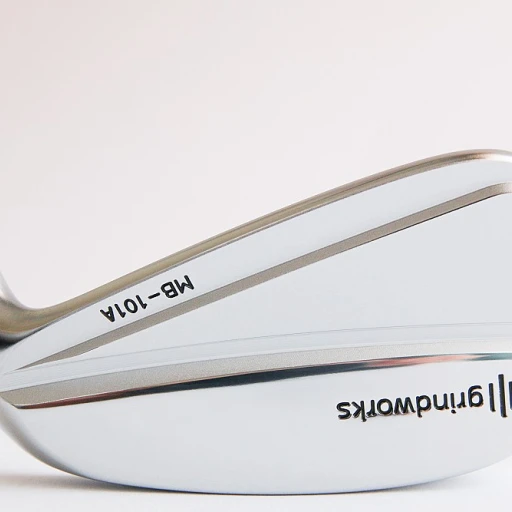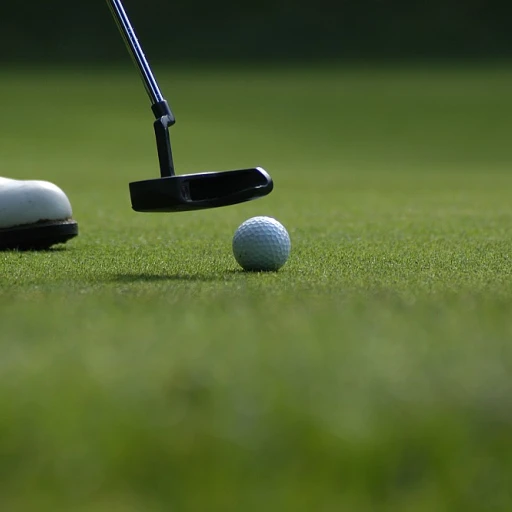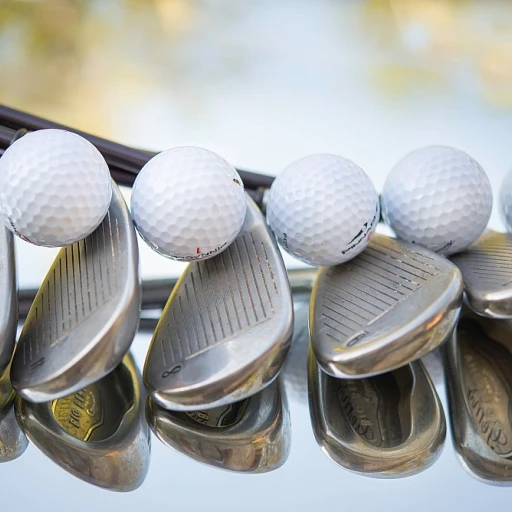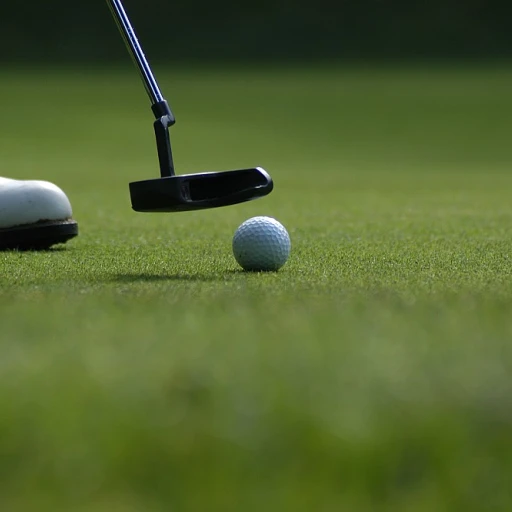
The Role of Swing Weight in Golf
The Importance of Balancing Every Component
Understanding the role of swing weight in golf is crucial for players aiming to enhance their performance on the green. At its core, swing weight relates to the balance point of your golf club, impacting how the club feels during your swing. Unlike total weight, swing weight does not simply refer to how much the entire club weighs in grams. Instead, it focuses on the distribution of the club's weight, particularly how the head weight interacts with the shaft and grip.
### What is Swing Weight?
To put it plainly, swing weight is a measure of a club's resistance to rotation around a pivot point, often the golfer's hands. It is quantified via a swingweight scale, where points such as D2, C9, and so on correspond to different weights in grams. A higher swingweight point can make a club feel heavier, even if the actual weight in grams remains unchanged. This is achieved by adding weight to the club head or by using lead tape. The balance of a set of clubs in terms of swing weights is integral to providing consistency in the feel throughout your game.
Swing weight is determined not only by the head weight and overall weight of the club but also by factors such as shaft weight, length, and the grip used. All these components must harmonize correctly to increase the Moment of Inertia (MOI), enhancing stability during swings.
### The Technical Side
Golfers and club fitters often debate the optimal swing weight, as preferences can be subjective. However, manufacturers have created a standard range of swing weights for various club types. For instance, irons typically utilize a lighter swing weight compared to drivers. By understanding this balance, golfers can customize their sets to improve their performance effectively.
For more on how such specific golf rules come into play, you might find it insightful to read about the essentials of 4-person scramble golf rules, which highlights the strategic aspects of the game influenced by equipment choices.
How Swing Weight Affects Performance
The Impact of Swing Weight on Performance
In the world of luxury golf, the fine nuances of swing weight can significantly influence a player's performance. As each golfer maneuvers their way through a set of clubs, the balance and weight distribution become pivotal. The swing weight refers to how heavy a club feels when you swing it. Yet, more than the feel, it fundamentally alters the mechanics of your swing. The swingweight scale typically ranges from A0 to G10, where each swingweight point corresponds to approximately 2 grams in the club head. This delicate variation can dictate control and precision, impacting shot distance and accuracy. Golfers need to appreciate that as the swing weight increases, the club head feels heavier during the swing, potentially affecting speed and tempo. When examining the moment of inertia (MOI) and balance point, swing weight plays an essential role in striking the golf ball cleanly. A higher swingweight means a more pronounced head weight, granting more momentum at impact. This can be advantageous or detrimental depending on shaft weight, club length, and individual technique. Understanding the dynamics between weight swing and how it affects overall performance can be insightful. By mastering these elements, golfers can expect enhanced performance on the course. For a deeper insight into such delicate dynamics in golfing, explore the understanding the dynamics of bounce and roll in golf. This can provide further understanding of performance enhancements through weight adjustments.Understanding the Swing Weight Table
Deciphering the Swing Weight Measurements
Understanding the nuances of swing weight is integral to appreciating its role in luxury golf clubs. A swing weight serves as a measure of how heavy a club feels when swung. It's not about the total weight of the club, but rather the distribution of that weight, especially around the club head. This concept is often measured using a swingweight scale. The scale operates by assessing the balance point of the club and expressing it as a "swingweight point". The scale ranges from A0 to G10, where each letter corresponds to 10 points. Generally, most golf clubs fall between D0 and D6. The swing weight is influenced by factors such as head weight, shaft weight, length of the club, and even the grip. For instance, even a slight alteration, like adding lead tape to the club, can modify the swing weight, affecting its feel. In luxury golf experiences, understanding these measurements allows players to customize and optimize their performances tailored to individual preferences. This custom fitting can be decisive in ensuring the club complements your swing characteristics, enhancing control and power during play. If you're intrigued by how balance and details contribute to mastering your game, you might want to explore how elevate your game with luxury putting experiences.Luxury Golf Clubs and Customization
Crafting the Perfect Custom Experience
Luxury golf clubs stand in a league of their own, offering customization options that cater to the unique preferences of discerning golfers. The concept of swing weight plays a crucial role in this customization process, impacting how comfortable and effective a club feels in your hands. Luxury brands meticulously tailor each detail, from the grip to the club head, ensuring a seamless blend of artistry and engineering. These bespoke adjustments revolve around the swing weight, which harmonizes the relationship between shaft weight, head weight, and club length. By altering these variables, manufacturers can craft clubs that perfectly match the golfer's swing profile. Swing weights in luxury clubs are often fine-tuned using lead tape or through weight ports that allow players to add or remove weight. Adjustments might involve shifting only a few grams here and there, yet these minute changes greatly impact how the club performs during a round. For golfers, understanding their ideal swing weight involves testing various weights and configurations over multiple sessions. This trial helps in identifying the perfect balance point, which enhances both control and comfort. The presence of advanced technologies, like moment of inertia (MOI) adjustments, further allows players to optimize their swing weight, providing an unmatched feel. Custom fittings in luxury golf clubs offer the precision and flexibility essential for golfers to elevate their game. With an emphasis placed on swing weight, players are empowered to reach their maximum potential on the course, all the while enjoying equipment that aligns perfectly with their swing mechanics and playing style.Choosing the Right Swing Weight for You
Finding the Perfect Balance for Your Game
Choosing the right swing weight is crucial for any golfer looking to optimize performance and enhance the feel of their swing. The swingweight point directly affects the moment of inertia (MOI) of the golf club, a factor critical in the precise execution of every stroke. When selecting the ideal swing weight, it's important to consider your personal preferences and playing style. The swing weight influences how light or heavy the golf club feels during your swing. A heavier swingweight often leads to a more controlled swing, beneficial for those who value precision. On the other hand, a lighter swingweight might appeal to golfers who prioritize faster swing speeds. A few factors should be weighed:- Club Length: Longer golf clubs naturally increase the swing weight. As a result, adjusting the length of a golf club can help you achieve your preferred balance without complicating the overall feel.
- Club Head Weight and Shaft Weight: Consider the weight distribution within the club. A heavier club head paired with a light shaft can shift the balance point, impacting the swing feel and control.
- Grip Adjustments: Grip size and weight also come into play when customizing for ideal swing weight. Often, golfers use lead tape to adjust the swing weight precisely, bringing the pivot point to their liking.
The Future of Swing Weight in Luxury Golf
Evolving Trends and Innovations in Swing Weighting
The ever-evolving world of luxury golf clubs is continuously redefining the way players experience the game, particularly through advancements in swing weighting technology. As we've explored earlier, swing weight plays a crucial role in enhancing a player's performance by optimizing how the golf club feels during a swing. But what does the future hold for swing weight in luxury golf equipment?
Technological innovations are at the forefront, enabling manufacturers to fine-tune the balance point and moment of inertia (MOI) more precisely than ever. This allows for the creation of clubs that not only cater to a golfer's unique preferences but also offer improved accuracy and control.
Furthermore, customization continues to be a central theme. Golfers are demanding bespoke clubs tailored to their individual swing dynamics. This has led to more sophisticated swingweight scales and charts to provide detailed comparisons and data analysis. Moreover, the use of adjustable weights and interchangeable components, such as lead tape or weight cartridges, provides players with the flexibility to tweak their equipment in subtle ways that directly affect performance.
As we move forward, expect these trends to push the boundaries of what's possible with swing weight customization. Offering more than just a change in grams, this evolution could revolutionize the feel of the club in your hands. The precision in club head and shaft weight distribution will undoubtedly continue to set apart luxury golf clubs, providing both amateur and professional golfers a competitive edge.













